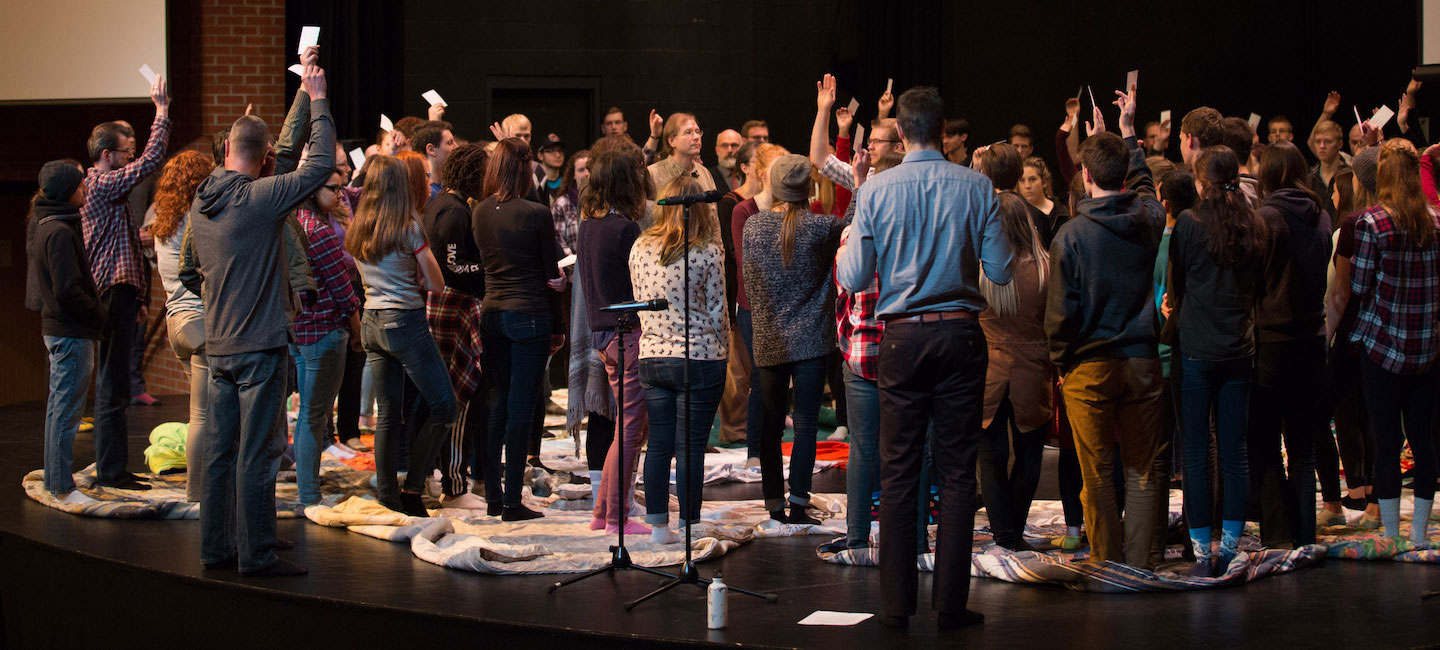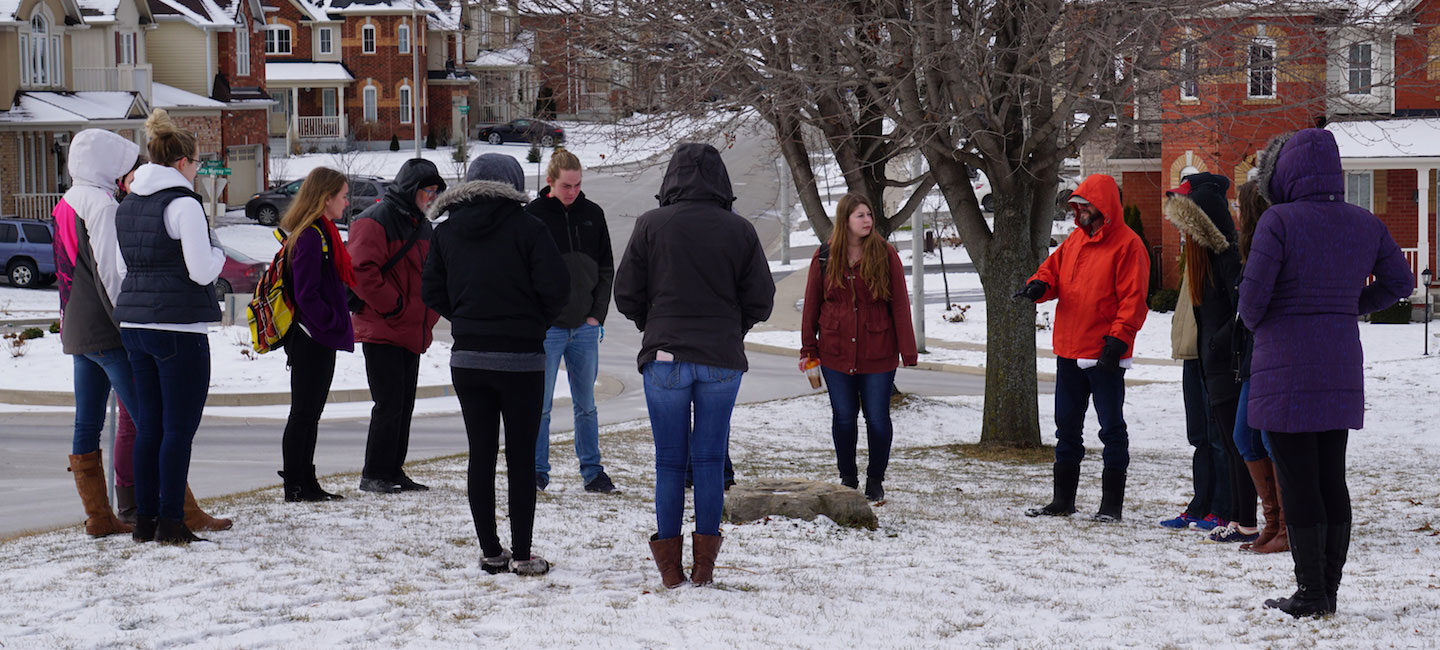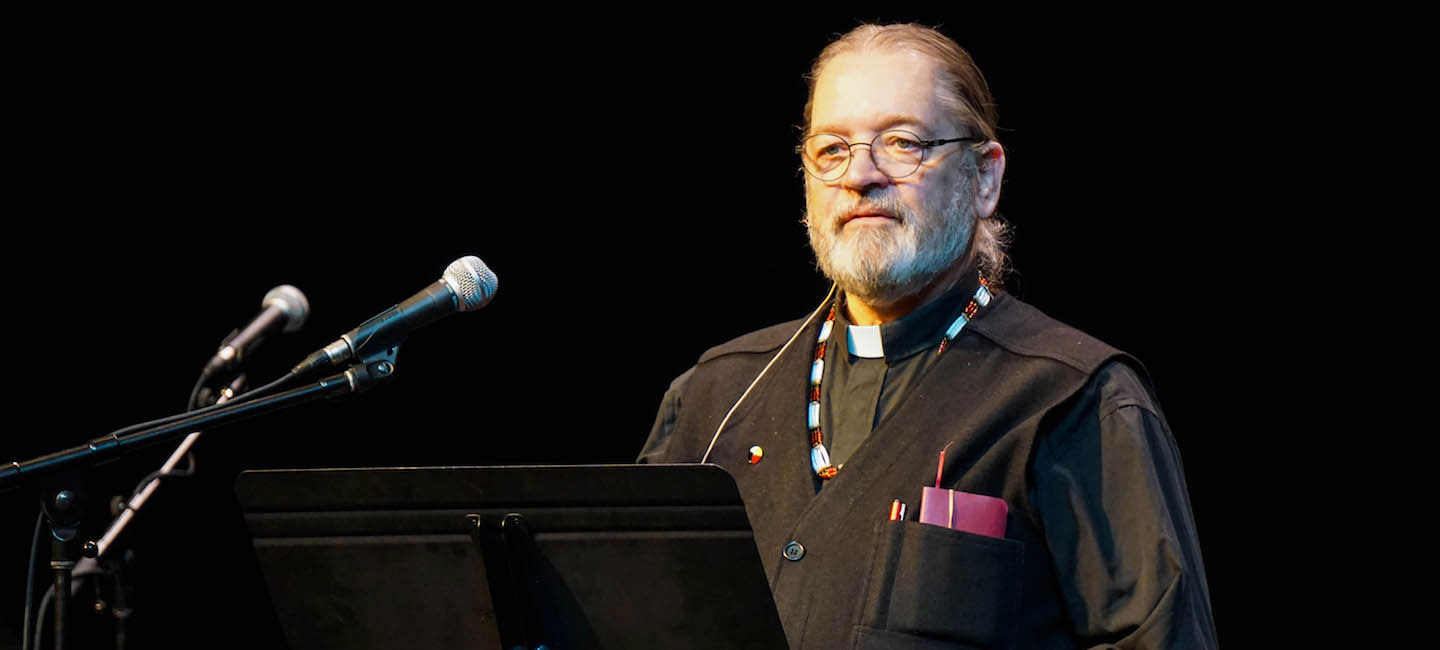As we stood, with bare or socked feet, on the myriad blankets spread across the stage, a hush fell over the gathered Redeemer community. There was a sense of ritual in the space, a shared assent that something sacred was about to happen. The blankets, KAIROS Canada’s Sara Anderson told us, represented the land the First Nations people inhabited before the invasion of the European settlers.
How heavy it is to remember how First Nations people suffered under the intrusion of settlers. As Anderson narrated the blanket exercise, we learned how Indigenous people were cast out of their homes, struck by smallpox because of the Europeans, and even had their children taken away and placed in residential schools and abusive homes. I watched the weight of those deeds hang over the shoulders of the Canadians around me. However, while Anderson spoke of great loss, she also spoke of an even greater strength and hope. She sang an Indigenous closing song over us that called us to remember and honour what our eyes had been opened to. We learned how the First Nations people overcame all odds, and remained a courageous and proud people.
This participatory chapel service was part of a month’s worth of events, intended to raise campus awareness of Indigenous issues in Canada. Dr. Naaman Wood, Dr. Deanne Van Tol and Professor Ray Louter led the grassroots conversation. From mid-January to mid-February, the campus read the book Wrongs to Rights: How Churches can Engage the United Nations Declaration on the Rights of Indigenous Peoples. The community also learned from speakers like Sara Anderson and Mark MacDonald, the national Indigenous Bishop for the Anglican Church of Canada; as well as from events, like a tour highlighting the campus’s Aboriginal history.
A campus tour like no other
In the days following the blanket exercise, Ray Louter, one of the longest serving professors in Redeemer’s theatre arts department, hosted the first of two tours of the campus grounds This tour would take our group through a history so ancient that its traces could only be found in a display case on the campus’s second floor, in relics dug up during the survey and excavation of the foundations that would become the Redeemer campus.
As he led us outside, Ray’s low and ponderous voice imbued us with a sense of the deep and long history of the earth Redeemer stands upon. Here, he said, on this very campus building, was where villages used to be; there, where the First Nation villagers tilled the land and lived off it. And then, as we came over the hill and up towards the white indoor soccer dome, Ray stopped and swept a long arm over the grounds, at the steep car-lot, and the gravel salt-streaked road. He described what used to stand on the land – forests, farms, and homes.
This rock symbolized the harmony between Redeemer and the people who came before. Redeemer had invited the Indigenous clan whose people had had the original claim to the land, to seek their blessing for Redeemer to build and grow upon it.
This gave our group pause, and we forgot the rain starting to mist up our glasses, and the cold creeping into the spaces of our coats, to stand silent and think of those who came before us. Ray led us to the hill where Redeemer’s sign stood tall and proud, and brought our attention to the trees lined up from the sign to the edge of the hill. Most importantly, though, Ray showed us the empty space where a tree should have been, and in its place was a rock. This rock symbolized the harmony between Redeemer and the people who came before. Redeemer had invited the Indigenous clan whose people had had the original claim to the land, to seek their blessing for Redeemer to build and grow upon it. This request was given gladly, with a beautiful ceremony involving the placement of the rock that symbolized the accord.
You belong here
When I first entered Redeemer, its slogan welcomed me in with the statement: You Belong Here. Four years later, the slogan has changed, but these words ring truer than ever as Redeemer strives to reach out to its Indigenous brothers and sisters with this same message. Many of us are called, encouraged Bishop MacDonald in his chapel talk this February, to find the relationship and reconciliation with our Indigenous brothers and sisters.
“Jesus is coming again, we have a future and a destiny in Him,” said the Bishop, regarding the heart of hope in his Indigenous people. He went on to describe an Indigenous Christian community who loved Jesus Christ despite the abuse of those who brought Him to them, who loved and made a place of honour for Jesus in their own Indigenous context.
“With the grace of God, we have been given the opportunity to reflect and act upon the ways we can reach out to First Nations communities.”
Great hope in reconciliation, he told us, lies in the way that God is remaking the nation through His people – both Indigenous, and new. With the grace of God, we have been given the opportunity to reflect and act upon the ways we can reach out to First Nations communities. This is no easy task, as nothing good and just ever is. However, this must not stop us striving ever onward until we are truly able to set wrongs to rights.


